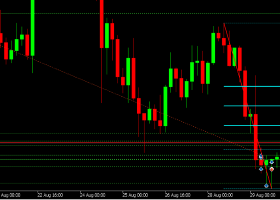
Crude-oil futures fell in Asian trade Tuesday, with Brent below the $65 mark, ahead of inventory data due later and a pledge from Saudi Arabia to keep pumping oil.
Barclays analysts say the market has passed through the worst, but it is not out of woods yet.
On the New York Mercantile Exchange, light, sweet crude futures for
delivery in June traded at $56.31 a barrel, down $0.68 or 1.1% in the
Globex electronic session.
On London’s ICE Futures exchange Brent crude fell $0.70, or 1.1%, to $64.12 a barrel.
The prices dropped for the second straight day after a rally earlier
this month, which saw Nymex crude up by nearly 19% month-to-date and
Brent crude prices up by more than 17%.
Drop in oil prices on Tuesday was attributed to comments from Saudi Arabia’s deputy oil minister, Prince Abdulaziz bin Salman, who said the country will keep pumping oil.
“Saudi Arabia is interested in maintaining its share in the market and interested in keeping its customers,” Prince Abdulaziz said, according to Bloomberg. “We will supply any demand for Saudi oil, as we are interested in the stability of the market. Stability includes price, supply and demand stability.”
Markets will also be closely watching initial oil-inventory data from the American Petroleum Institute, and analysts expect another weekly increase.
Michael Cohen, analyst at Barclays Research said that supply-and-demand fundamentals remain weak, and prices are likely to bounce in the range of $55 and $75 a barrel.
In the meantime, Barclays raised its oil-price forecast by $8 on the back of Middle Eastern geopolitical unrest, new oilfield outages and lower U.S. natural gas prices. It now expects Brent crude to average $60 a barrel in 2015, and $68 a barrel in 2016.
Bullish investors are betting on an imminent reduction in U.S. oil-producing capacity, but bearish investors are tracking the increase in oil stockpiles, feeding into price volatility.
“In our view, there is no doubt that U.S. output is falling, and that the pace of decline is likely to accelerate in coming months,” said Paul Horsnell, head of commodities research at Standard Chartered.
In contrast to market assumptions, a quick recovery in U.S. oil production is highly unlikely as large numbers of workers have left the shale-oil regions, fracking companies have lost staff or gone out of business, and other oil-service companies have made tens of thousands of workers redundant.
Moreover, to stabilize output, the rig count in U.S. shale oil needs to rise by 200. “This is unlikely to happen this year in our view, with the industry taking at least 18 months to regain its former vigour, even if prices were to rise sharply in coming months,” Horsnell said.


